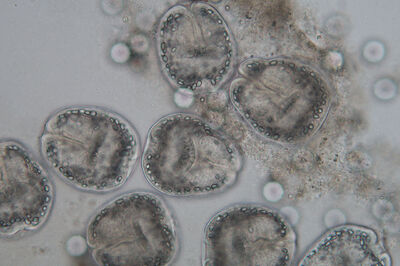18. 9. 2025
In addition to routine diagnostics, the Parasitology Laboratory studies the diversity of helminths in wild, farm and exotic animals. The laboratory places particular emphasis on the taxonomy, phylogeny and zoonotic potential of selected groups.
The research is based on the integration of classical morphological methods and advanced molecular approaches. The results obtained by combining these methods thus provide not only a basis for the systematic classification of species, but also valuable information for veterinary practice, biological monitoring, and strategies for preventing the transmission of parasites between animals and humans.
Monitoring helminth diversity is also key to predicting the emergence and spread of epizootic and zoonotic diseases, which has a significant impact on public health and biodiversity conservation.
Máca, O., González-Solís, D. A new Oxyspirura (Nematoda, Thelaziidae) in three captive non-human primate species. Frontiers in Veterinary Science 12, 1650452 (2025).
Husák, T., Čadková, Z., Máca, O., Kouba, M., Klimková, Z., Sehnal, R., Hrabětová, V., Jankovská, I., Vadlejch, J., Langrová, I. Molecular identification of zoonotic taeniids metacestodes in several rodent species trapped in Central Europe. Frontiers in Veterinary Science 12, 1571082 (2025).
Máca, O., Pavlásek, I. Protozoan and helminth infections of aviary-reared Alectoris rufa (Galliformes: Phasianidae) before releasing for hunting in the Czech Republic: infection dynamics and potential risks. Journal of Parasitology 106, 439 (2020).
Máca, O., Pavlásek, I., Vorel, A. Stichorchis subtriquetrus (Digenea: Paramphistomatidae) from Eurasian beaver (Castor fiber) in the Czech Republic. Parasitology Research 114, (2015). https://doi.org/10.1007/s00436-015-4495-y




